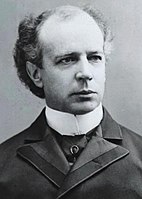
Back Kanadische Unterhauswahl 1904 German Elecciones federales de Canadá de 1904 Spanish Élections fédérales canadiennes de 1904 French הבחירות הפרלמנטריות בקנדה 1904 HE Alegeri legislative în Canada, 1904 Romanian
| |||||||||||||||||||||||||||||||||||||
214 seats in the House of Commons 108 seats needed for a majority | |||||||||||||||||||||||||||||||||||||
|---|---|---|---|---|---|---|---|---|---|---|---|---|---|---|---|---|---|---|---|---|---|---|---|---|---|---|---|---|---|---|---|---|---|---|---|---|---|
| Turnout | 71.6%[1] ( | ||||||||||||||||||||||||||||||||||||
| |||||||||||||||||||||||||||||||||||||
 | |||||||||||||||||||||||||||||||||||||
 The Canadian parliament after the 1904 election | |||||||||||||||||||||||||||||||||||||
| |||||||||||||||||||||||||||||||||||||
The 1904 Canadian federal election was held on November 3, 1904 to elect members of the House of Commons of Canada of the 10th Parliament of Canada. Prime Minister Sir Wilfrid Laurier led the Liberal Party of Canada to a third term in government, with an increased majority, and over half of the popular vote.
Sir Robert Borden's Conservatives and Liberal-Conservatives were unable to challenge the Liberals effectively, and lost a small portion of their popular vote, along with four seats, including his own.[2] Borden re-entered parliament the next year in a by-election.
This was the last election until 1949 in which parts of the Northwest Territories were granted representation in the House of Commons. During this parliament, most of the settled region of the NWT was hived off the NWT as the provinces of Alberta and Saskatchewan on 1 September 1905, although the NWT MPs continued to sit as representatives of their old ridings until the 10th Parliament's dissolution.
One of the key issues in the election was Imperial Preference.[2]
- ^ "Voter Turnout at Federal Elections and Referendums". Elections Canada. Retrieved March 10, 2019.
- ^ a b Garner, J. W. (1904). "Record of Political Events". Political Science Quarterly. 19 (4): 740. doi:10.2307/2140340. ISSN 0032-3195. JSTOR 2140340.
Cite error: There are <ref group=lower-alpha> tags or {{efn}} templates on this page, but the references will not show without a {{reflist|group=lower-alpha}} template or {{notelist}} template (see the help page).

